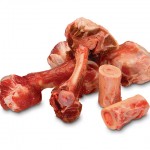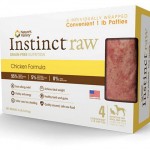W. Jean Dodds, DVM:
Hemopet / NutriScan
As those of you who read my posts and follow my work are aware, I advocate that optimum health begins with optimum nutrition. This is not just an “opinion”; it is a fact born out by the latest scientific research, which is focused on functional foods designed for the individual person or animal. This is also referred to as nutrigenomics. Nutrigenomics (which I will talk much more about in the coming months and in our upcoming book titled, Nutrigenomics: Foods that Heal Your Dog) is the study of the effect of nutrition on the expression of the genes in the body’s “genomic map”. Basically, this approach allows us to use foods to help prevent and mitigate the predisposition to certain disease processes. This means that while we may live our lives with a specific set of DNA that we cannot change, we can change how that DNA is expressed – manifesting either a life of health or one of illness. This is true for humans as well as our companion animals.
The commercial pet food industry would have us believe that food is largely about “numbers” (i.e. the amounts of specific nutrients used). If it’s “complete and balanced” according to standards set by The American Association of Feed Control Officials (AAFCO), it is typically deemed “nutritious”. Nutrigenomics, on the other hand, shows us that these “numbers” are just one piece of the nutrition puzzle. The other major piece is the quality of the ingredients that are used to obtain those numbers. It’s not the quantity of food that speaks to an individual’s genes; it’s the quality.
So what does this all have to do with soy? Plenty.
In an effort to provide consumers with convenient, inexpensive and “nutritionally balanced” pet foods (i.e. – the right “numbers”), commercial pet food manufacturers are turning to cheaper – and inferior – forms of protein. Since protein is by far the most expensive ingredient in pet food, “skimping” on the quality of this critical nutrient enables manufacturers to meet AAFCO standards for a “complete and balanced” food while at the same time reducing their processing costs.
Which leads us to soy.
Like corn and wheat, soy is a less expensive, inferior source of protein often used in pet foods as a substitute for higher quality meat protein. And while soy can indeed provide the “right” amino acid profile, it harbors too many potentially negative effects for me to condone its use.
Let’s take a closer look at some of the issues with soy:
Soy affects the thyroid gland
As those of you who have read my book The Canine Thyroid Epidemic know, soy interferes with the thyroid gland’s ability to make T4 (thyroxine) and (T3) tri-iodothyronine, hormones necessary for normal thyroid function. As the thyroid gland struggles to make these hormones it enlarges, causing a condition known as “goiter”. Foods such as soy that cause goiter are therefore referred to as goitrogenic.
Isoflavones in soy are the primary compounds linked to decreased thyroid function. Isoflavones such as genistein interfere with the TPO (thyroid peroxidase) gene’s role in making thyroid peroxidase, an enzyme necessary for the chemical reaction that ultimately produces T4 and T3 via the protein thyroglobulin.
In dogs, the result is hypothyroidism (low thyroid function), the most common endocrine disorder affecting our canine companions. Hypothyroidism in dogs can result in disruption to a variety of critical systems causing many symptoms, including:
• Metabolic changes: (lethargy, weight gain, mental dullness, cold intolerance, exercise intolerance, mood swings, chronic infections, seizures)
• Neuromuscular (nerve/muscle) problems: (weakness, stiffness, facial paralysis, head tilt, incontinence, drooping eyelids)
• Skin diseases: (dry, scaly skin and dandruff, chronic offensive skin odor, hyperpigmentation, “rat tail,” “puppy coat,” pyoderma)
• Reproductive disorders: (infertility, absence of heat cycles, silent heats, testicular atrophy)
• Cardiac abnormalities: (slow heart rate, cardiac arrhythmia, cardiomyopathy)
• Gastrointestinal and liver disorder: (constipation, diarrhea, vomiting)
• Blood disorders: (bleeding, anemia, bone marrow failure)
• Eye disorders: (corneal lipid deposits, corneal ulceration, “dry eye”)
• Behavioral disorders: (fear, aggression, anxiety)
The opposite effect occurs in cats, whereby the enlarged thyroid gland (goiter) and imbalanced iodine intake in foods (too high) with lowered production in the body result in hyperthyroidism (overactive thyroid). Just as hypothyroidism is the most common endocrine disorder of dogs, hyperthyroidism is the most common endocrine disorder of cats. Some common signs include:
• Weight loss
• Ravenous appetite
• Rapid heart rate
• Less socialization with family members or other pets
• Behavioral changes such as vocalization and urinating outside the litter box
Soy is antigenic
Soybeans and the many soy derivatives commonly found in pet foods are recognized as one of the main causes of both acute and sub-acute food hypersensitivities (i.e. allergies) as well as long-term food intolerances in pets. Beware of soy in its various forms: it typically appears in pet foods as soybean meal, soy flour, grits, hulls, soy protein concentrate, isolated soy protein and textured vegetable protein (TVP).
Please remember, as I had discussed in my June 26, 2012 post titled “Food Sensitivity vs. Food Allergy: Is It Not Really the Same Thing?”, symptoms of true food allergies are rare, immediate reactions to the offending food and can include hives and rashes. Food intolerances, which occur over longer periods of exposure to the food antigen, typically manifest as disorders of the skin (primarily itching) or gastrointestinal tract (a “leaky gut”). If you would like to know if your pet is sensitive to soy or other common food antigenic ingredients, visit the saliva-based diagnostic testing on NutriScan.
Phytoestrogens in soy can disrupt endocrine function
Phytoestrogens (including isoflavones) are chemicals found in plants that act like the hormone estrogen and can either mimic or block estrogen’s effect. A 2004 study analyzing 24 commercial dog foods containing soy found that these products contained phytoestrogens in comparable amounts to phytoestrogen levels known to create biological effects in other species. Potential negative effects of dietary phytoestrogens include infertility, precocious or delayed puberty, immune system abnormalities and decreased hair growth.
But that’s not all. Other negative effects of soy include:
• Contains antinutrients that inhibit trypsin (a pancreatic enzyme) and other enzymes necessary for protein digestion
• Can cause serious gastric distress (gas and discomfort)
• Phytates in soy block absorption of essential minerals
• Non-organic soy is likely genetically modified (GMO), potentially increasing the antigenic characteristics and creating other as yet unstudied effects.
Given the potential dangers, I advise that you steer clear of soy and opt instead for high quality proteins that are derived from animal meat. Remember, optimum nutrition is not just about quantity; it is about quality. And quality is what determines a food’s potential to create optimum health on a cellular level.
About Dr. Jean Dodds
Dr Jean Dodds is a world renown vaccine research scientist and the founder of Hemopet, a nonprofit animal blood bank in Southern California. More about her here.
References
Cerundolo, R, Court, MH, Hao, Qin & Michel, KE, 2004, ‘Identification and concentration of soy phytoestrogens in commercial dog foods’, American Journal of Veterinary Research, vol. 65, no. 5, pp. 592-596.
Fahey, GC, (not dated), ‘Soybean Use: Companion Animals’, Soybean Meal Information Center Fact Sheet. http://www.soymeal.org/FactSheets/domesticpets.pdf
Fallon, S & Enig, MG, 2000, ‘Cinderella’s Dark Side’, http://www.mercola.com/article/soy/avoid_soy3.htm











